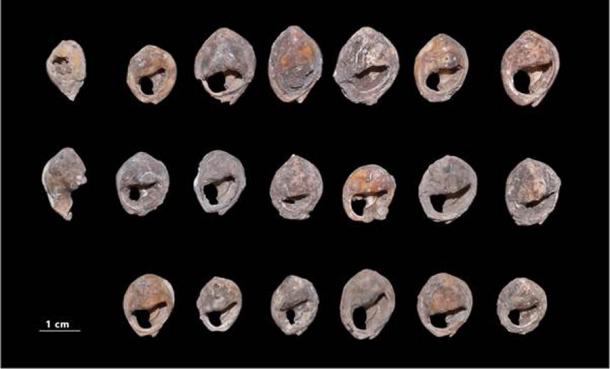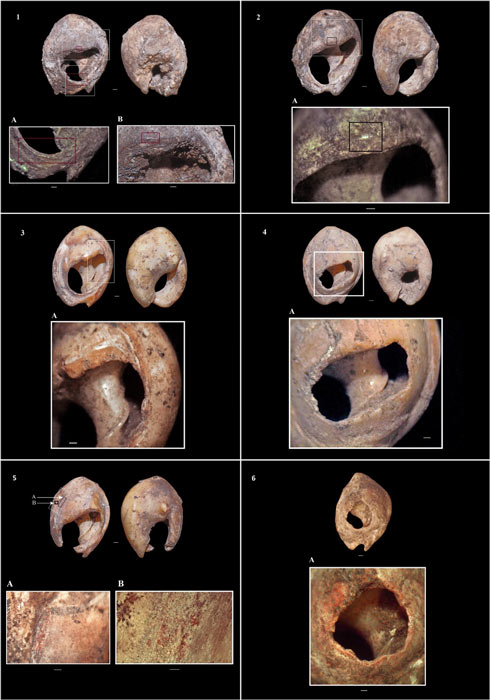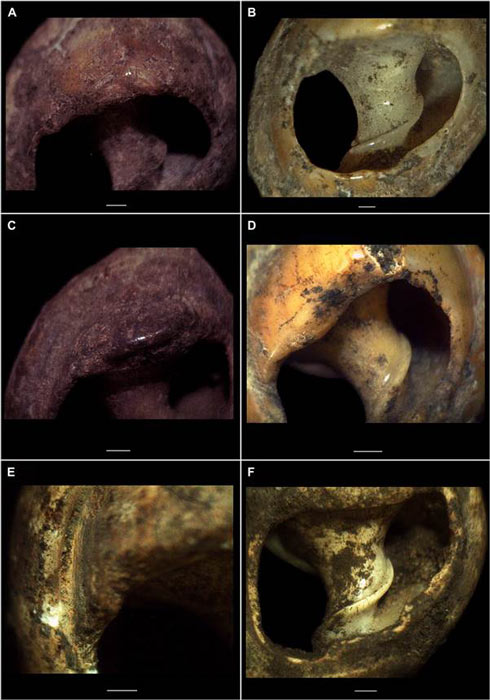Humans were adorning their persons to make fashion statements 142,000 to 150,000 ago, according to a new analysis of the sea snail shell jewelry beads found in Morocco’s Bizmoune Cave. Conducted by a team of anthropologists from Morocco’s National Institute of Archaeology and Cultural Heritage (INSAP) as well as the University of Arizona in the US and France’s LAMPEA research institute, the Bizmoune Cave shell bead research study, published in the journal Science Advances , stretches the use of jewelry by humans back by 10,000 to 20,000 years from that previously recorded.


Photos from the recent study showing the sea snail shell jewelry beads found in the Bizmoune Cave of Morocco. ( ScienceAdvances)
The Bizmoune Cave Sea Snail Shell Jewelry Beads
Made from half-inch-long (1.3-centimeter-long) sea snail shells the 33 jewelry beads were found during excavations near the mouth of Bizmoune Cave between 2014 and 2018. The cave, located near the coastal resort of Essaouira in the western Morocco desert, was discovered in 2004, and the first excavations were conducted there in 2008 and 2009.
The scientists used uranium-series dating, which measures the decay of uranium , to determine the age of the beads and the layer of ash and sediment they were found in. The beads were made from two sea snail species, Columbella rustica and Tritia gibbosula.
Each bead has a small hole drilled through it, probably for a string to pass through. They were possibly worn as bracelets or necklaces . Many have smooth polished edges, indicating that they had been worked upon.

Closeup images of a few of the sea snail shell jewelry beads found in the Moroccan cave, which were dated in the recent research study to over 140,000 years ago. ( ScienceAdvances)
The Purpose Of the Bizmoune Cave Beads: Human Expression
While the Bizmoune Cave beads show that humans even as far back as the Early Middle Stone Age (a period between 300,000 to 130,000 years ago) were crafting jewelry with the materials and tools available to them, what was it that impelled them to do so?
In a statement from the University of Arizona reported in Artnet News , team member Stephen Kuhn explained that the Bizmoune Cave jewelry was a form of human expression.
“Humans have been expressing themselves through the symbolic use of seashells for thousands of years. This discovery is the oldest example of this type of human expression. It has broad implications for anthropologists’ understanding of human evolution and development …. [The beads] were probably part of the way people expressed their identity with their clothing.”
“They’re the tip of the iceberg for that kind of human trait. They show that it was present even hundreds of thousands of years ago, and that humans were interested in communicating to bigger groups of people than their immediate friends and family.”
He also added that wearing jewelry was a part of meeting strangers and expanding social networks as people didn’t have to signal their identities to family members, reports Smithsonian Magazine .
Beads made of marine shells are in fact the earliest and most common indicators of symbolic human behavior. Abdeljalil Bouzouggar of INSAP, who is another of the authors of the study, said at a press conference that similar examples have been found across the Middle East and Africa from between 35,000 and 135,000 years ago. “These people searched for the same type of seashell despite the existence of many other types. This shows that they shared something. Maybe there was even a language. These objects travelled over huge distances.”
Because written languages are only a few thousand years old, the beads were “essentially a fossilized form of basic communication,” according to Kuhn. Thus, they constitute a significant find for scientists studying the evolution of cognitive development.
Given that they are durable, the beads were perhaps a way of conveying a “more permanent” message from their makers than one that could be expressed through other means available at the time, such as body paint, Kuhn stated. “We don’t know what they meant, but they’re clearly symbolic objects that were deployed in a way that other people could see them.”
Some other examples of early prehistoric jewelry recently analyzed include a polished pendant crafted from the finger bone of a bear from the Indonesian island of Sulawesi, and a 120,000-year-old shell necklace discovered in Qafzeh Cave in Israel.
The Moroccan sea snail shell jewelry beads found in the Bizmoune Cave provide fascinating evidence, once again, of the human desire to adorn their persons as an expression of identity from the earliest times. And in this case we are talking about 142,000 to 150,000 years ago!
Top image: The Bizmoune Cave sea snail shell beads have been dated to at least 142,000 years ago, according to the latest research study, making them the oldest jewelry in the world! Source: ScienceAdvances
By Sahir Pandey
 RSS Feed
RSS Feed















 November 23rd, 2021
November 23rd, 2021  Awake Goy
Awake Goy  Posted in
Posted in  Tags:
Tags: 













